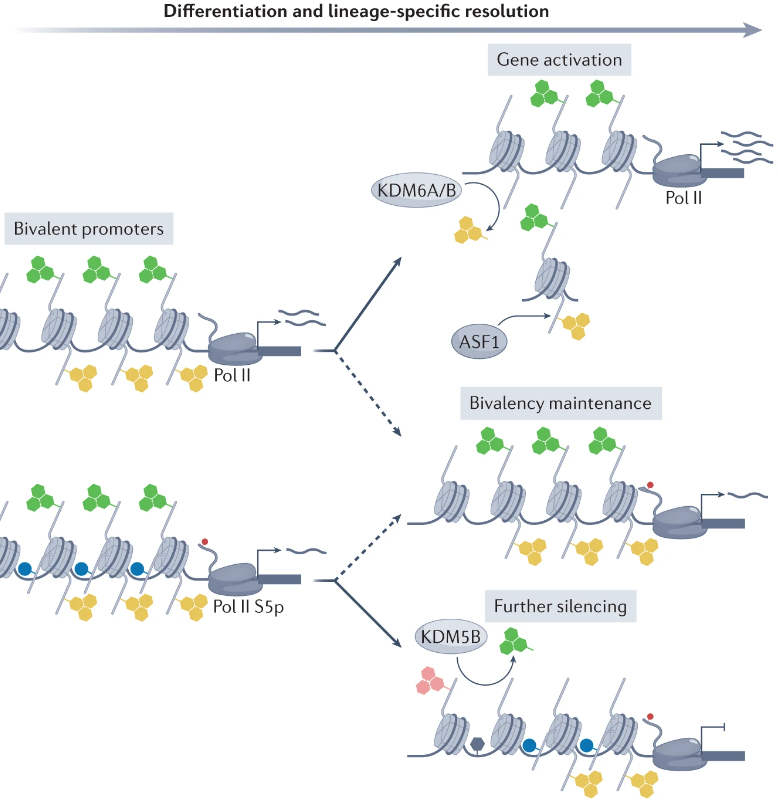Regulation, functions and transmission of bivalent chromatin during mammalian development
Authors: Macrae TA, Fothergill-Robinson J, Ramalho-Santos M.
Nat Rev Mol Cell Biol, 2022, https://doi.org/10.1038/s41580-022-00518-2
Abstract: Cells differentiate and progress through development guided by a dynamic chromatin landscape that mediates gene expression programmes. During development, mammalian cells display a paradoxical chromatin state: histone modifications associated with gene activation (trimethylated histone H3 Lys4 (H3K4me3)) and with gene repression (trimethylated H3 Lys27 (H3K27me3)) co-occur at promoters of developmental genes. This bivalent chromatin modification state is thought to poise important regulatory genes for expression or repression during cell-lineage specification. In this Review, we discuss recent work that has expanded our understanding of the molecular basis of bivalent chromatin and its contributions to mammalian development. We describe the factors that establish bivalency, especially histone-lysine N-methyltransferase 2B (KMT2B) and Polycomb repressive complex 2 (PRC2), and consider evidence indicating that PRC1 shapes bivalency and may contribute to its transmission between generations. We posit that bivalency is a key feature of germline and embryonic stem cells, as well as other types of stem and progenitor cells. Finally, we discuss the relevance of bivalent chromtin to human development and cancer, and outline avenues of future research.

